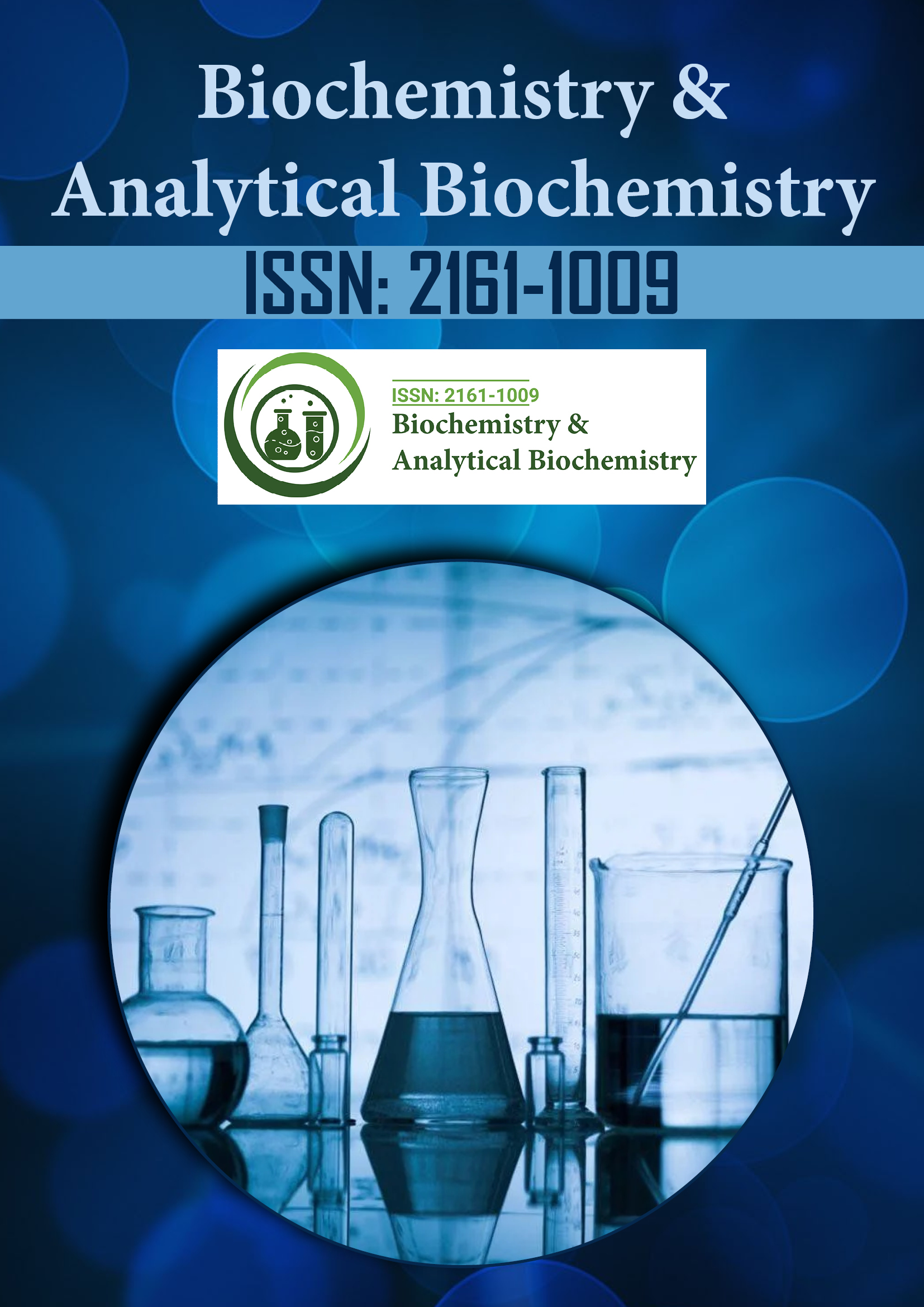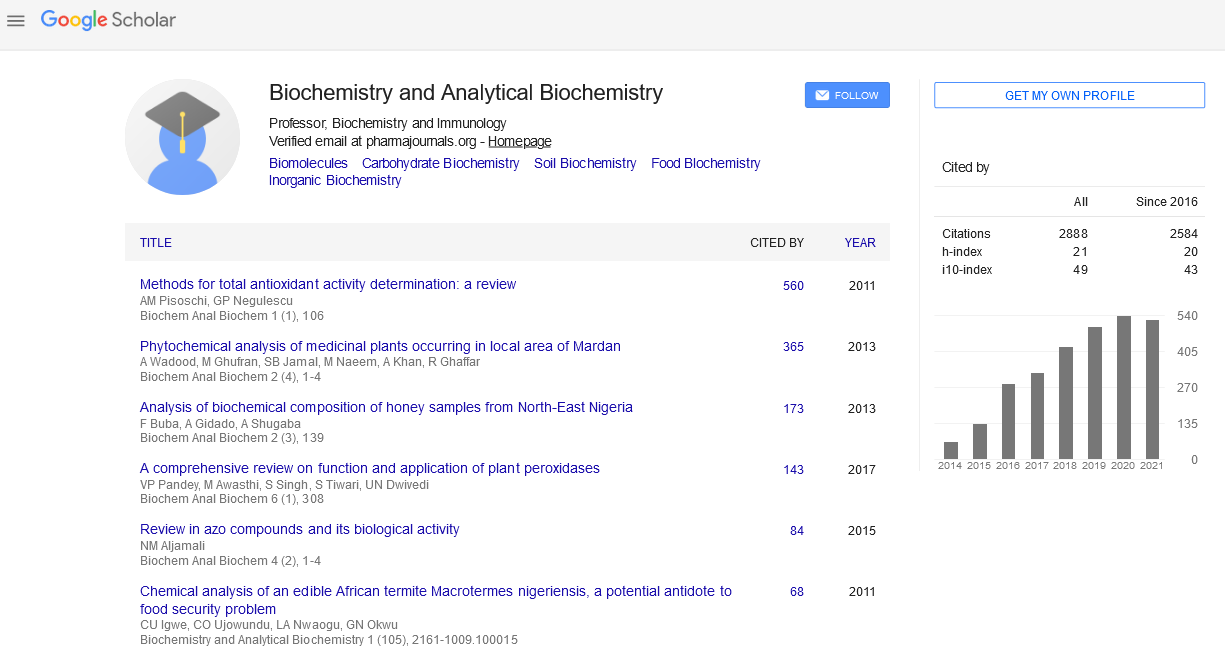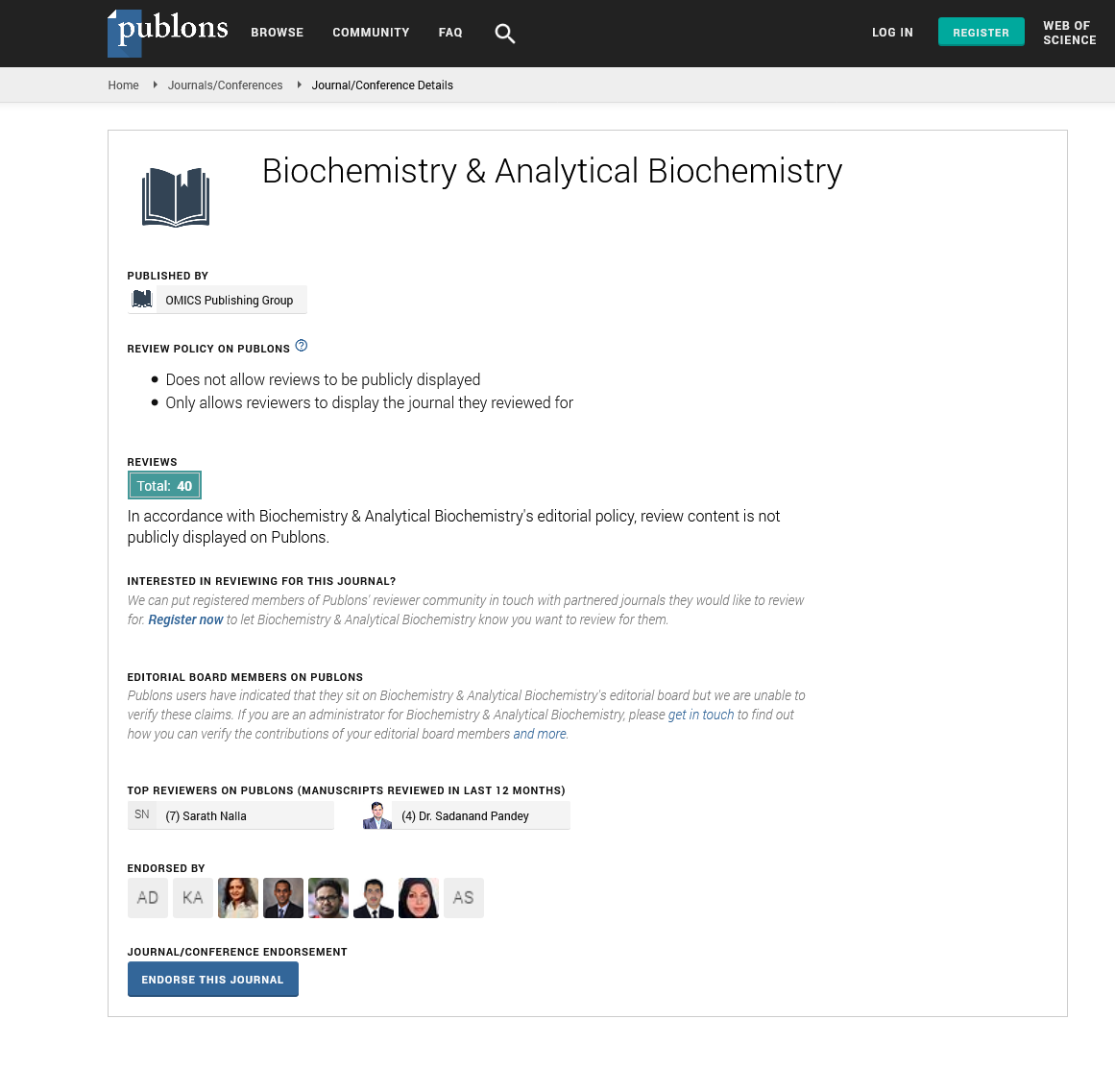Indexed In
- Open J Gate
- Genamics JournalSeek
- ResearchBible
- RefSeek
- Directory of Research Journal Indexing (DRJI)
- Hamdard University
- EBSCO A-Z
- OCLC- WorldCat
- Scholarsteer
- Publons
- MIAR
- Euro Pub
- Google Scholar
Useful Links
Share This Page
Journal Flyer

Open Access Journals
- Agri and Aquaculture
- Biochemistry
- Bioinformatics & Systems Biology
- Business & Management
- Chemistry
- Clinical Sciences
- Engineering
- Food & Nutrition
- General Science
- Genetics & Molecular Biology
- Immunology & Microbiology
- Medical Sciences
- Neuroscience & Psychology
- Nursing & Health Care
- Pharmaceutical Sciences
Abstract
Mechanism of Propofol's Action on MAP Rich Tubulin and Actin - An In Vitro Study
Sahni P, Kumar M and Pachauri R
Despite a century of sustained research, brain scientists remain ignorant of the workings of the three pound organ that is the seat of all conscious human activity. Many have tried to attack the problem by examining the nervous systems of simpler organisms. The difficulty in establishing a link between biology and behaviour in humans is still more acute. There are techniques which are used to record the activity of single neurons in living humans. Such breakthrough methods could, in principle, begin to bridge the gap between the firing of neurons and cognition: perception, emotion, decision making and ultimately, consciousness itself. Deciphering the exact patterns of brain activity that underlie thinking and behavior will also provide critical insights into what happens when neural circuitry malfunctions in psychiatric and neurological disorders-schizophrenia, autism, Alzheimer's or Parkinson's. Anesthetics are also known to inhibit neuronal fast anterograde axoplasmic transport (FAAT) in a reversible and dose-dependent manner, but the precise mechanism by which anesthetic prevent consciousness remains unknown largely because the mechanism by which brain physiology produces consciousness is unexplained. In the present study we have used circular dichroism spectroscopy and confocal laser scanning microscopy to see the effect of propofol on the assembly of neuronal tubulin and actin together and probed into the changes of their secondary structures.


